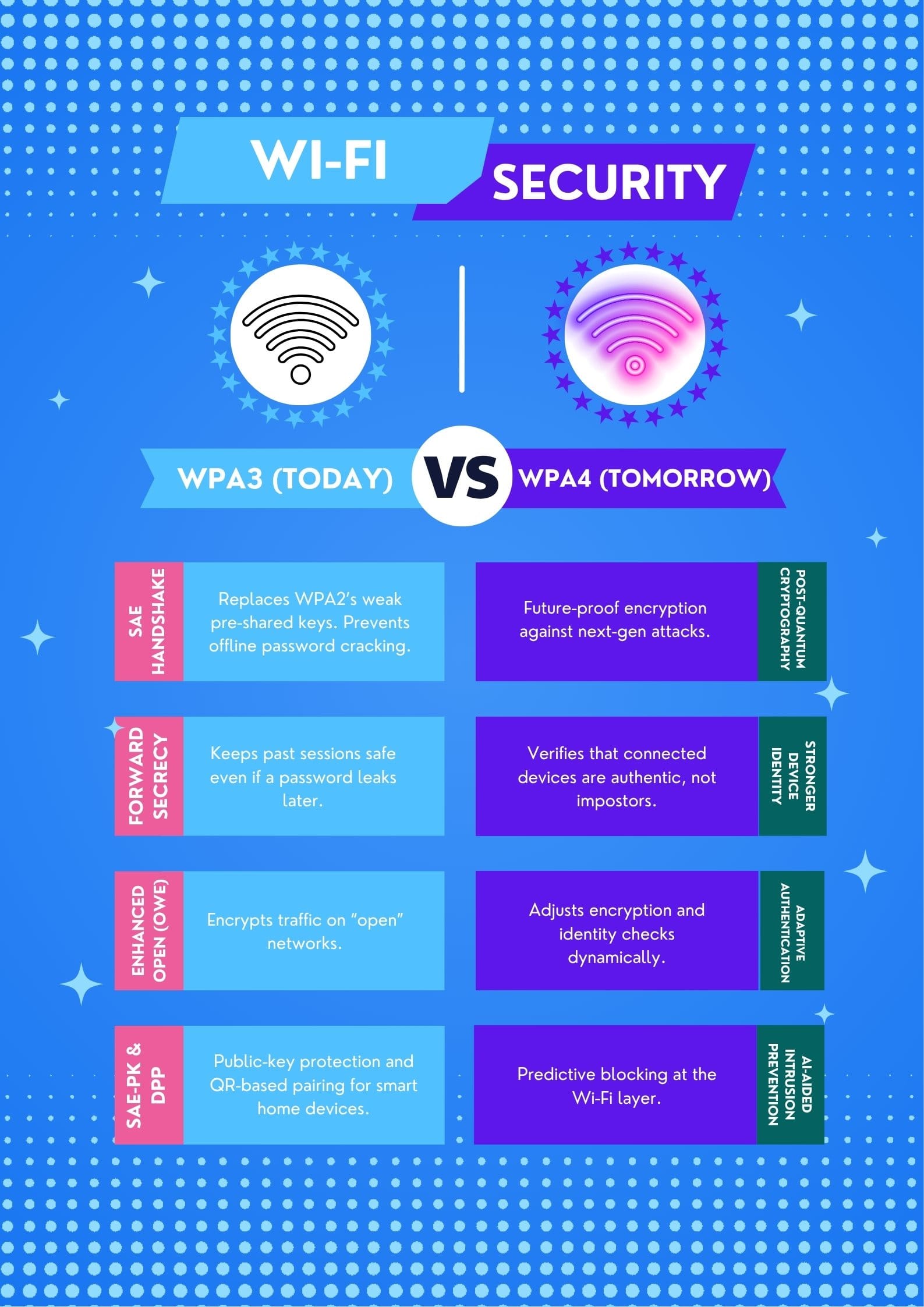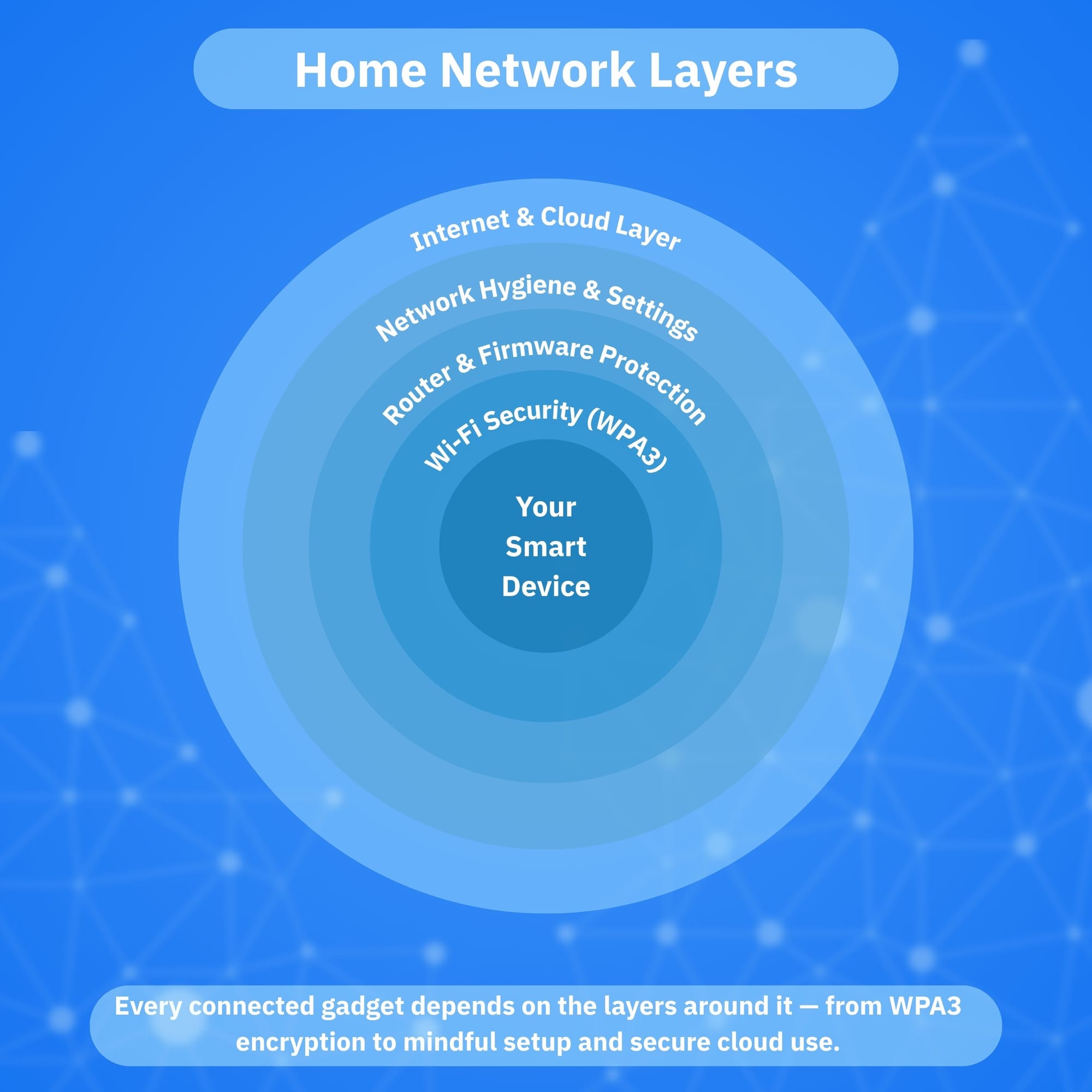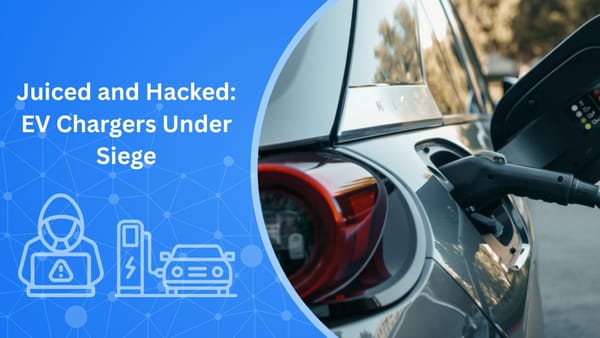What WPA4 Means for Your Next Smart Fridge

Thinking about upgrading your kitchen tech? Here’s what WPA4 would change for Wi-Fi security and how to buy safely right now.
Quick reality check: WPA4 isn’t here (yet)
Despite plenty of blog chatter, the Wi-Fi Alliance hasn’t announced or certified a WPA4 program. The current shipping baseline is WPA3, which continues to receive incremental upgrades like SAE-PK or H2E, rather than a brand-new “WPA4” label.
In other words, you can’t buy WPA4 today, and device makers aren’t certifying for it yet.
Why you still win with WPA3 (if done right)
WPA3 fixes many long-standing issues of WPA2 and it’s where smart fridges and other IoT gadgets should be headed:
- SAE handshake: Replaces PSK to resist offline password-guessing and provide forward secrecy.
- SAE-PK (Public Key): Prevents “evil twin” clones of your home SSID when you share passwords widely (think of guest handouts). Vendors are rolling this into products today.
- Enhanced Open (OWE) for “open” networks: Encrypts traffic even without a password; useful when your fridge supports Wi-Fi provisioning modes.
A fridge that truly supports WPA3 (and ideally SAE-PK) is far better than any “WPA4-ready” marketing tease. There’s no formal WPA4 to be “ready” for yet.

Will Wi-Fi 7 force WPA4?
No. Wi-Fi 7 (802.11be) focuses on speed as well as features like Multi-Link Operation (MLO) while continuing to rely on WPA3 for security. Some MLO behaviors have security implications, but there’s no separate “Wi-Fi 7 security = WPA4” requirement.
Buying checklist for a ‘future-proof’ smart fridge
When you scan spec sheets or ask a retailer, you can look for these few things to make sure your new purchase will pass the test of time. Namely:
1. WPA3-Personal with SAE listed (not just “WPA2/3 compatible”).
2. SAE-PK support (sometimes shown as “WPA3-SAE-PK” or “WPA3-PK”). This blocks SSID spoofing when you’ve shared the password.
3. DPP/Wi-Fi Easy Connect (QR-code onboarding). It pairs devices securely without typing passwords on clunky screens. (Often included with WPA3 deployments).
4. Regular firmware updates via the manufacturer’s app and a visible security bulletin page. (Ask: “How long do you publish security updates?”)
If any of this isn’t clear on the shelf label, check the vendor’s manual online before buying.

Secure setup tips on day one
- Create a separate IoT network (or VLAN/guest network) for appliances; keep laptops/phones on the primary SSID.
- Use a strong, unique passphrase; WPA3 resists offline guessing, but weak passwords can still hurt you.
- Disable WPS if your router still offers it.
- Keep auto-updates on for the fridge and the router.
- Block unnecessary internet access with your router’s device rules if the fridge doesn’t need remote features all the time.
Where ‘WPA4’ most likely goes
If you want to plan ahead, it wouldn’t hurt to learn more about WPA4. Industry discussions point to post-quantum key exchanges and stronger device identity as the next logical step beyond WPA3’s SAE and SAE-PK. Think of WPA4, whenever it appears, as formalizing those advances rather than reinventing the wheel for Wi-Fi security.
Until standards land, treat any WPA4-specific claims as purely speculative.
Add a safety net for your entire household
Even well-configured WPA3 fridges often live on busy home networks with TVs, cameras, plugs and kids’ monitors. Specialized software like NETGEAR Armor (powered by Bitdefender) adds network-wide defenses: malicious site blocking, vulnerability assessments for connected devices, phishing protection and on-the-go device security via the app.
Recent updates also introduce a VPN (Armor Plus) and privacy tools that cover dozens of devices, making it easier to lock down every gadget without touching each one. It’s available on compatible Orbi and Nighthawk routers.
Give your smart kitchen a smarter perimeter. If your router supports it, turn on NETGEAR Armor to auto-block malicious traffic, flag risky devices and add VPN protection across your entire IoT ecosystem.
TL;DR for shoppers
- There’s no official WPA4 yet, so don’t wait for it. Buy a fridge that truly supports WPA3 (with SAE) and, ideally, SAE-PK and Easy Connect.
- Segment your network, keep firmware updated and use a secure router.
- Layer protection with NETGEAR Armor to protect every connected device at home.

Frequently Asked Questions (FAQ)
Is WPA4 out yet?
No. As of today, WPA4 has not yet been released by the Wi-Fi Alliance. The latest certified standard is WPA3, which remains the security foundation for Wi-Fi 6 and Wi-Fi 7 devices. Any product billed as “WPA4-ready” is referring to future compatibility, not an active certification.
What is WPA4?
WPA4 is expected to be the next generation of Wi-Fi security, likely building on WPA3 by adding post-quantum encryption, stronger device identity validation and improved resistance to credential attacks. However, it’s still in the concept and discussion phase.
Is WPA better than a VPN?
They serve different purposes. WPA (Wi-Fi Protected Access) secures the wireless connection between your device and the router, preventing local eavesdropping. A VPN (virtual private network) protects your data traffic across the Internet, cloaking your IP address and encrypting all outbound connections. The most secure setup is using both: WPA3 at home and a trusted VPN when you’re away or on public networks.
Is Wi-Fi 6 or 7 better?
Wi-Fi 7 is newer and faster, offering Multi-Link Operation (MLO), reduced latency and improved handling of crowded networks. However, security-wise, both rely on WPA3, not WPA4. You’ll see speed and performance boosts with Wi-Fi 7, but no security upgrade until WPA4 becomes official.
Conclusion
While WPA4 is yet to come, the conversation around it is reshaping how we think about securing smart homes. The real takeaway for consumers today is to focus on proven WPA3 technology, firmware updates and network-level protection through tools like NETGEAR Armor.
Your next smart fridge or connected device doesn’t need to wait for WPA4 to be secure. With a WPA3-enabled router, segmented IoT network and automatic threat blocking from NETGEAR Armor, you can build a future-ready home environment that’s already one step ahead of tomorrow’s standards.
tags
Author
Vlad's love for technology and writing created rich soil for his interest in cybersecurity to sprout into a full-on passion. Before becoming a Security Analyst, he covered tech and security topics.
View all postsRight now Top posts
Scammers Exploit Hype Around Starbucks Bearista Cup to Steal Data and Money, Bitdefender Antispam Lab Warns
November 18, 2025
Scam Alert: Fake Sephora Advent Calendar Ads and WhatsApp Messages Flood Europe in 2025
November 17, 2025
ClickFix Malware Chain Expands: Fake TradingView and Sora 2 Ads On Meta Now Target macOS Users
November 17, 2025
Online Safety Challenge: A Week of Cyber Tasks for Families
October 27, 2025
FOLLOW US ON SOCIAL MEDIA
You might also like
Bookmarks








